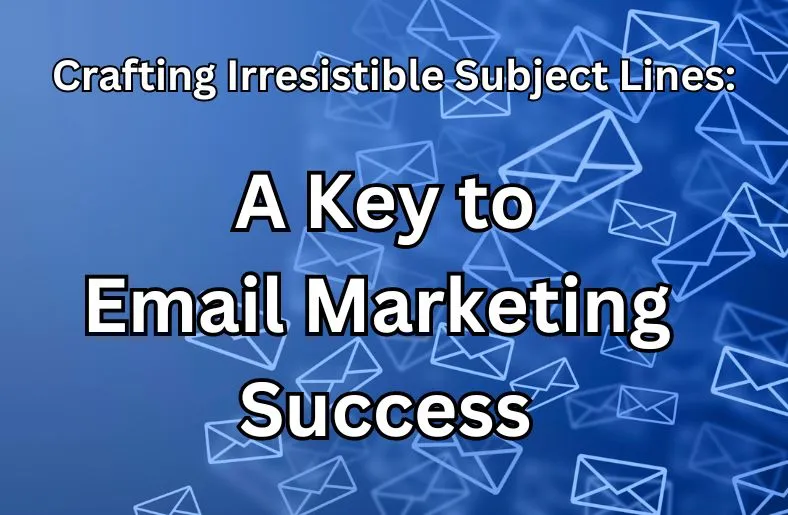Introduction to Email Marketing
Email marketing is still among the best channels for driving engagement and sales. Investing in targeted email marketing services can significantly boost your marketing efforts. With billions of people checking their emails daily, there’s a wealth of opportunity for businesses to reach their audience right where they are.
Despite the rise of social media and other forms of communication, email continues to hold a unique position, offering a direct line to your customers without the noise of other platforms.
Building Your Email List
A robust email list is the first thing to do in any effective email marketing plan. You can’t just buy a list, as it’s essential to build it organically to ensure high engagement and lower spam complaints. An organically grown list tends to have subscribers’ sincere interest in your offerings, which will increase conversion and rates of engagement.
For instance, creating valuable lead magnets such as eBooks, exclusive discounts, or informative webinars can attract potential subscribers. Additionally, make sure to use sign-up forms that are easy to fill out and located at strategic points on your website, whether at the end of blog posts, as a popup, or in the footer.
Leveraging social media to drive email sign-ups with engaging calls-to-action (CTAs) also plays a crucial role in expanding your list. Social media sites may assist you in expanding your audience and converting followers into subscribers.
Crafting Compelling Email Content
The content of your emails needs to captivate your audience. It’s not just about sales promotions; it also provides value with well-crafted messages. One way to grab attention right away is with intriguing subject lines. The subject line is the first thing your audience sees and greatly influences whether they will open the email.
Make sure your emails look attractive by using a good balance of text and images because too much text can feel overwhelming, while too many images can slow down loading times.
Including strong CTAs that encourage the desired action from your readers is equally crucial. Whether you want them to visit your website, use a discount code, or share your content on social media, your CTA should be clear and compelling.
Personalization and Segmentation
Personalized emails deliver better results. Aim to make your emails feel like they were just for the recipient. Personalization goes beyond using the recipient’s first name and subject line in the email though that’s a good start. Segment your list by demographics, behavior, and engagement levels to make your emails more relevant to each audience group.
Sending targeted emails catering to each segment’s needs and interests can drastically improve your open and click-through rates. For example, you could use past purchase behavior to recommend products or services or send tips and content that align with the recipient’s interests. Personalization and segmentation can transform your email marketing from generic to genuinely engaging.
Automation and Timing
Email automation allows you to send timely, precise messages without manual intervention. Integrating automation into your strategy improves efficiency and performance. Setting up autoresponders for welcome emails, confirmations, and follow-ups ensures your audience receives the right messages at the correct times.
For instance, a new subscriber should get a welcome email soon after signing up, followed by newsletters introducing them to your brand and offers. Scheduling emails for optimum times when your audience is most engaged raises the chance of your emails being opened and read.
Use drip marketing to guide and nurture prospects as they move through your sales funnel by delivering relevant content at various stages of their journey. This strategic approach helps build a relationship with your audience over time.
Analysing Email Campaign Performance
To continually improve, you must analyze your campaigns. Use various metrics to understand what works and what doesn’t. Click-through rates and open rates are important metrics to monitor. Which are critical indicators for monitoring (CTR), conversion rates, unsubscribe rates, and spam complaints. Analyzing these metrics provides insights into what resonates with your audience and what needs adjustment.
For instance, if your open rates are low, you should improve your subject lines. If your CTR needs to be improved, focus on creating compelling content and CTAs. Your analysis should guide future content and strategy adjustments to ensure you’re consistently meeting the needs of your audience.
Consider this comprehensive guide on email marketing metrics for deeper insights, which offers valuable tips on measuring and improving your campaigns effectively.
How to Avoid Spam Filters
Getting past spam filters is crucial for the success of your email campaigns. Please do so to ensure your deliverability rates are maintained. Start using a reputable email service provider (ESP), which often has mechanisms to help ensure your emails reach inboxes.
Remove any trigger words or phrases related to spam from your subject lines and content, as these can flag your emails as spam. Additionally, maintain a clean email list by regularly removing inactive subscribers and confirming new subscribers through a double opt-in process. This helps ensure that your emails go to individuals sincerely interested in your material, lowering the possibility of spam complaints and raising interaction.
Future Trends in Email Marketing
Email marketing is continuously evolving. Keeping up-to-date with the most recent developments offers you a competitive advantage. One exciting trend is interactive emails, which include features like polls, surveys, and forms that recipients can fill out directly within the email. These interactive features give you valuable data and feedback in addition to engaging your audience.
Final Words
AI and machine learning also grow in email marketing, allowing for better personalization and automation. By analyzing vast amounts of data, AI may assist you in determining which material appeals to your audience the most and automate the delivery of highly personalized emails.
Mobile optimization remains crucial, as many people access their emails on mobile devices. Ensure your emails are easily readable on smaller screens by using responsive design and testing how your emails look on various devices.





